The Andyson Platinum R 1200W PSU Review
by E. Fylladitakis on April 24, 2015 8:00 AM EST- Posted in
- Cases/Cooling/PSUs
- 1200W
- 80Plus Platinum
- Andyson
Cold Test Results
For the testing of PSUs, we are using high precision electronic loads with a maximum power draw of 2700 Watts, a Rigol DS5042M 40 MHz oscilloscope, an Extech 380803 power analyzer, two high precision UNI-T UT-325 digital thermometers, an Extech HD600 SPL meter, a self-designed hotbox and various other bits and parts. For a thorough explanation of our testing methodology and more details on our equipment, please refer to our How We Test PSUs - 2014 Pipeline post.
Note: As the Andyson Platinum R 1200W cannot follow the test protocol guidelines without overloading its 3.3V/5V lines, the load derating factor DV of these two lines is being reduced to 50%. To explain why, we will be putting up a pipeline post shortly to explain the matter, as it applies to several other units.
Even if its low load efficiency is not much to look at, the Andyson Platinum R 1200W meets the 80Plus Platinum certification requirements with ease. It manages a maximum conversion efficiency of 94.2% at 40% load and an average of 92.8% within the nominal load range (20% to 100% of the unit's capacity). When the load is reduced below 20%, the efficiency plummets, dropping to 81.7% at 10% load and further down to just 74.7% at 5% load. This was to be expected, as this is how SMPS PSUs operate. A 5% of a unit this powerful corresponds to an output of 60W, ample to power a modern system while it is idling, so higher low-load efficiency would be more than welcome.
Due to the very high efficiency and the presence of adequately sized heatsinks, the Andyson Platinum R 1200W maintains very low internal temperatures without overworking its cooling fan. The temperature of the heatsinks barely surpassed 65°C under maximum load, when 100 Amperes were flowing from the transformer to the distribution PCB. The cooling fan displays a "stepping" behavior, staying entirely quiet up to 40% load and then stepping up each time that the load increases. Even with a load of 1kW, the noise levels are tolerable for daily use, with the fan pushing the borders of comfort only at maximum load.


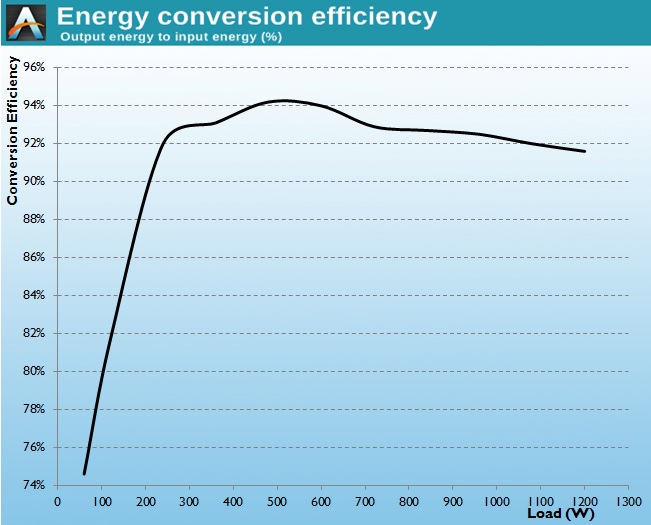
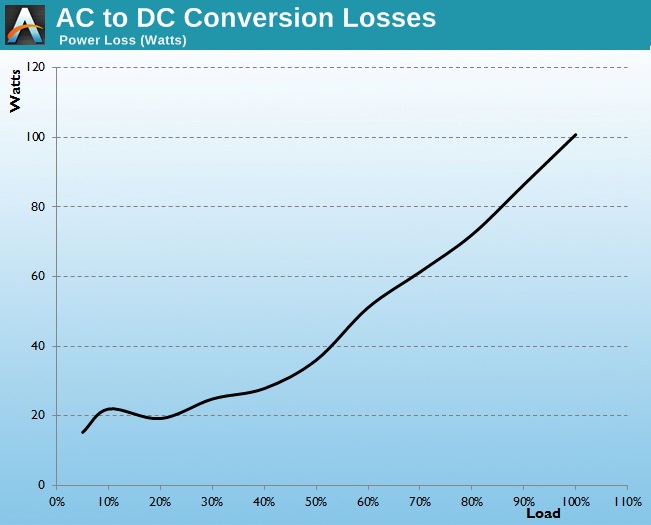
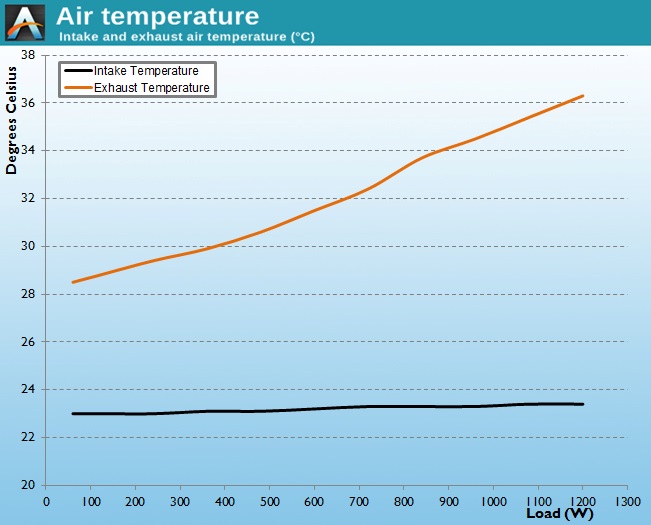
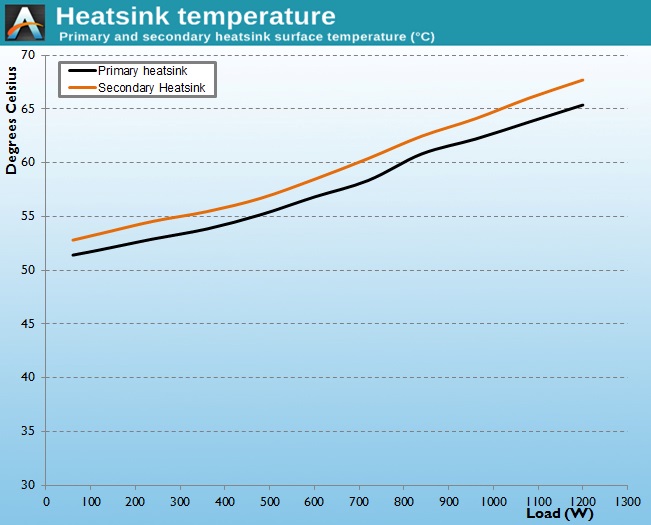
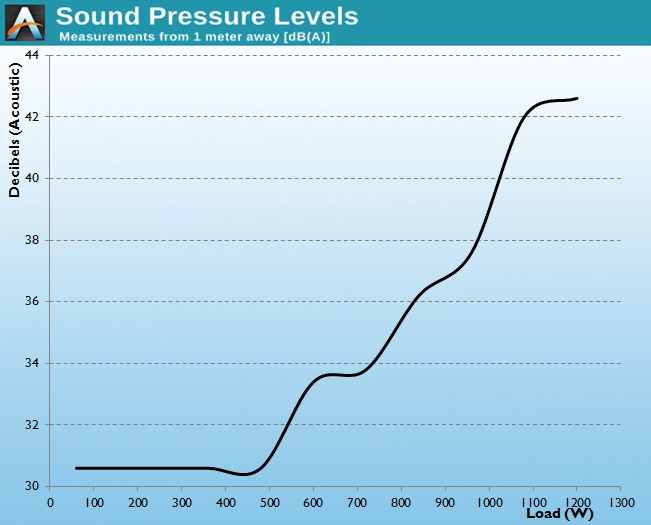








46 Comments
View All Comments
jabber - Saturday, April 25, 2015 - link
It's not so much the wattage its the size. A lot of us don't need legacy stuff like DVD drives, 4+ HDDs or Tri-SLi for gaming. So we are building smaller PCs. The days of the wardrobe PC are over. Wives and Gf's don't like huge black monoliths that light up like xmas trees. So the issue with the high wattages units are they don't go in smaller cases so easily. Up to 800W should be a standard sized unit no issue. I would have thought a smaller unit could be made up to 600W.KAlmquist - Sunday, April 26, 2015 - link
You should consider buying a fanless PSU.kevith - Sunday, April 26, 2015 - link
Just wanted to mention, that I have a Hiper "Type-R 580w Modular" PSU, that has been running with absolutely no flaws for 6 years and three builds now.meacupla - Sunday, April 26, 2015 - link
Since I see Anandtech being one review sites with emphasis on SSF type computers, I find it odd that they review these massive 1000W+ PSUs.Where are the SFX PSUs from silverstone? 450W and 600W in such a compact size is pretty amazing, and even those can be overkill in the cases they are designed to go in.
sweeper765 - Monday, April 27, 2015 - link
Here for the comments as well. I don't even read these useless psu reviews. Would never use such a monstrosity even if given for free!blzd - Saturday, May 16, 2015 - link
Just wanted to voice my opinion for having reviews of reasonable power supplies. Proper power supply reviews are few and far in between, even less so for the reasonable sized ones in the 450-750W range.I had a Lepa 500W Gold rated PSU with 41A on the +12v rail that could not support my GTX 970 upgrade despite it meeting all the system requirements. Had to pick up a 750W EVGA (Seasonic OEM) gold rated to replace it but I can't find proper reviews of any of these "normal" units.